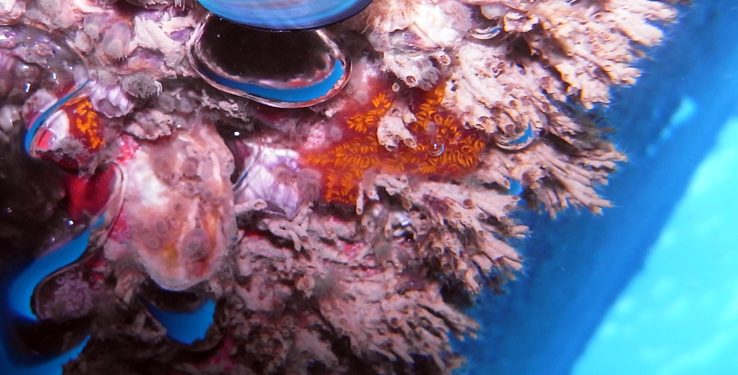In a recent article, DNV GL focuses on biofouling, which sees an increasing interest from the industry, as it can be a significant risk for marine environment. While there are no immediate proposals for regulation on the table at the IMO, new regulations are in place or developing in various countries.
Biofouling is defined as the accumulation of aquatic organisms such as plants, animals and micro-organisms on surfaces and structures submerged or exposed to the aquatic environment, and it becomes a risk for the environment when invasive aquatic species are transferred to new ecosystems.
Biofouling management is not required by the BWM Convention, since it is not part of its scope, but biofouling can also be a significant contributor to the transfer of invasive aquatic species.
A new project has been established by the Global Environment Facility, UN Development Programme and IMO as part of the GEF-UNDP-IMO’s GloFouling Partnership, aiming to focus on how biofouling should be controlled and managed to reduce the transfer of invasive aquatic species.
Vessel Biofouling, is believed to be responsible for up to sixty percent of the established invasive aquatic species along the California coast. Thus, California’s Marine Invasive Species Act includes a provision to remove Biofouling from vessels on a regular basis and California State Lands Commission (CSLC) introduced additional Biofouling management practices, performance standards, recordkeeping and reporting requirements, that are necessary to minimize the transport of invasive aquatic species into the waters of the State of California.
From 01 October 2017, new biofouling regulations and reporting requirements are in effect for vessels of 300 gross tons (GT) or more, calling a California port.
The US Coast Guard has required since 21 June 2012 a Biofouling Management Plan on board, and the State of California established a Marine Invasive Species Act in 2003 with the goal of reducing the risk of introducing invasive aquatic species.
Australia has developed several guidelines since 2009 for biofouling for recreational vessels, non-trading vessels, commercial fishing vessels, the petroleum production and exploration industry, commercial vessels, and since 2013 the aquaculture industry, and are in the process of considering biofouling regulations.
In New Zealand, the new Craft Risk Management Standard, which enters into force on 15 May 2018, requires that all vessels arriving shall have a clean hull or adhere to biofouling management best practices. The IMO Biofouling Management Plan (MEPC.2017[62]) is considered an example of best practices.
New regulations will soon enter into force in New Zealand, and Australia is considering new regulations in the near future.
The amount of biofouling that may be found on a ship is influenced by a range of factors, such as:
- Design and construction (number, location and design of niche areas)
- Specific operating profile (operating speeds, ratio of time underway compared with time alongside, moored or at anchor)
- Places visited and trading routes
- Maintenance history (type, condition of anti-fouling system, installation and operation of anti-fouling systems as well as dry-docking/slipping and hull cleaning practices)
It is recommended for the ship owners to have a Biofouling Management Plan with clear procedures and strategies. The economic benefit of doing so will improve vessel performance and lower the fuel consumption.


































































